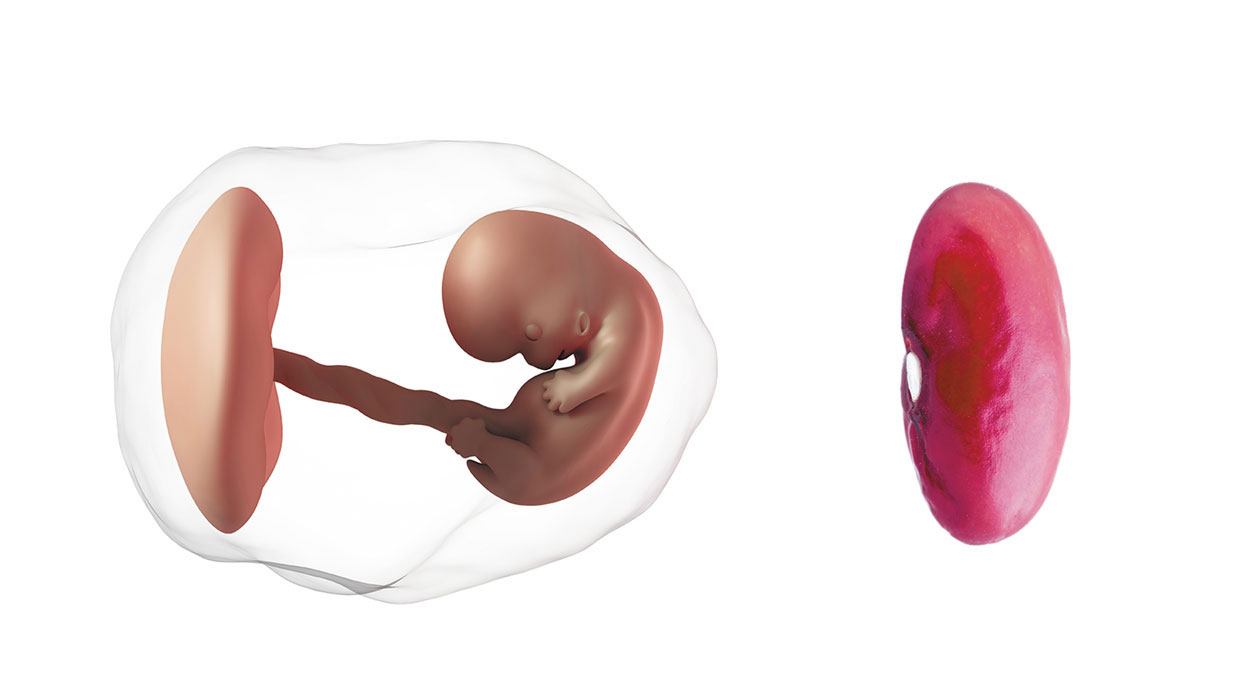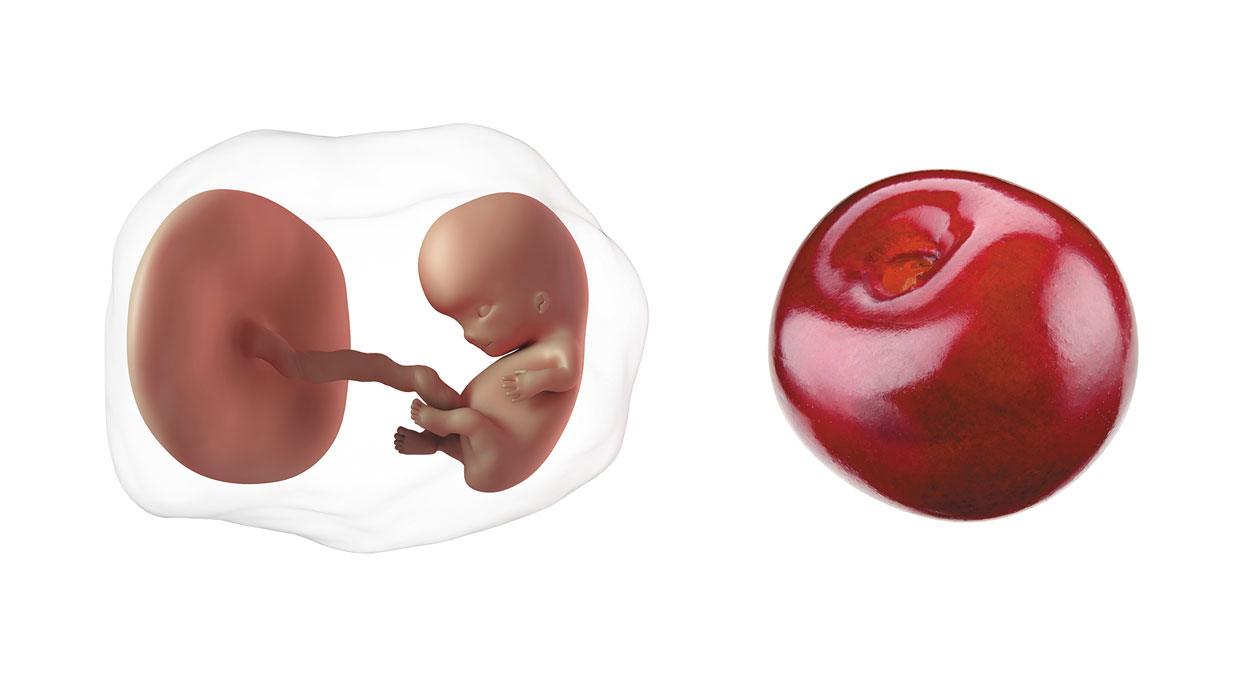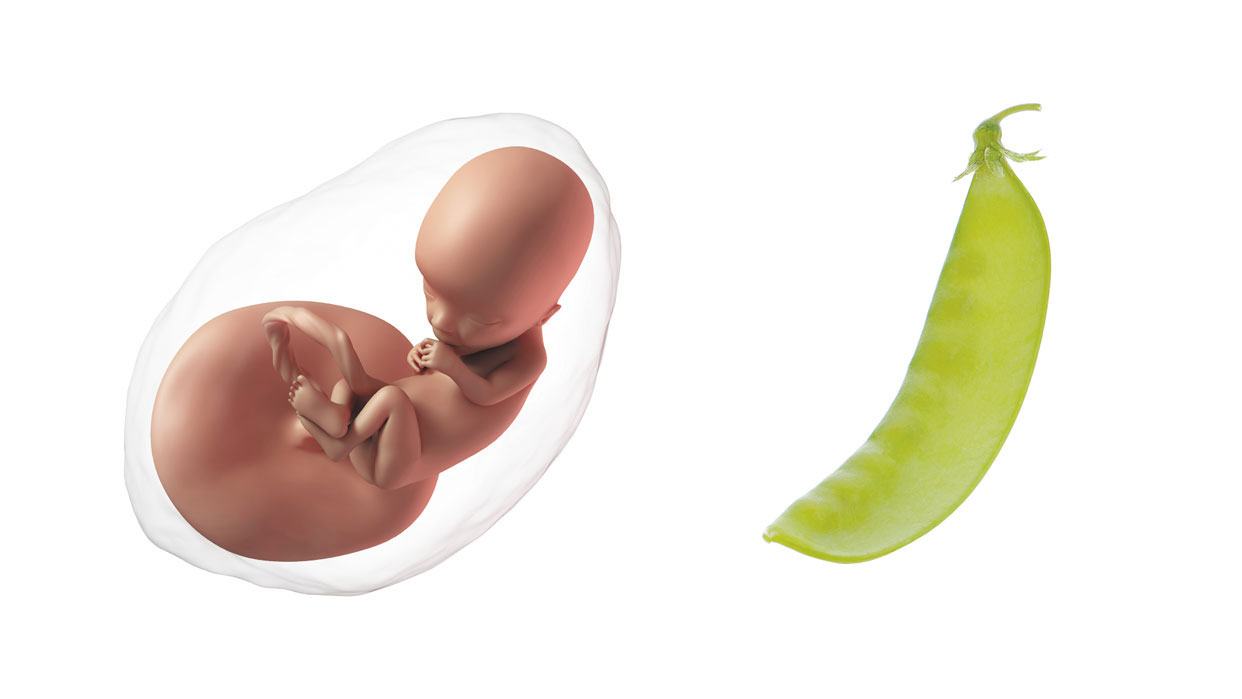I Got Pregnant in April, When Is My Baby Due?
Due Date Calculator
Take a quiz
Detect out what you can do with our Health Assistant
Delight note that Flo Health does not collect, process, or shop whatever of the data that you enter while using these Tools. All calculations are done exclusively in your browser. Flo Health does not take admission to the results. All data will be permanently erased after leaving or closing the page.
You have taken a pregnancy test, and it appears to be positive. At present you lot may be wondering when exactly your infant will get in. This is where due date calculators come in.
- If you have already had your first ultrasound scan, y'all can utilize our Due Date by Ultrasound Calculator.
- If you accept conceived through IVF, yous can use our IVF and FET Due Appointment Calculator.
Due date calculation: How many weeks pregnant am I?
The due appointment, or estimated date of delivery (EDD), is the estimate date when labor is expected to begin.
Equally this appointment is just an estimate, y'all'll probably start labor sometime in the 2 weeks before and after your due appointment.
In fact, only 1 in 20 people delivers on their estimated due date, which means only 5 percentage of babies worldwide are built-in on their exact calculated engagement.
Gestational age vs fetal age
There are ii ways to measure the age of a babe during pregnancy. To track pregnancy and calculate a due engagement, gestational age is used.
Gestation is the time between the conception date and nascency, or how long a person is pregnant in weeks. Gestational age is measured from the last menstrual catamenia (LMP) — the first day of your final menses — to the current date in weeks.
In general, pregnancies last anywhere from 38 to 42 weeks (or effectually 280 days). If a baby is built-in before 37 weeks, they are considered a premature infant.
The other method of measurement is fetal historic period. While gestational historic period measures how far forth a pregnancy is in weeks, fetal age is the bodily age of the growing babe.
You can read more about gestational age here and learn why it'south used to track pregnancy.
How does the Flo Due Date Reckoner work?
You tin can choose between ii methods when calculating your due appointment with the help of this calculator:
- Due appointment past the last menstrual catamenia. When using this method, the due date is calculated by adding 280 days (or nine months, the common length of a pregnancy) to the starting time 24-hour interval of your final menstrual period.Annotation that this supposition is for a regular 28-day wheel (cycles tin vary from 20 to 45 days), and the menstrual catamenia and ovulation are considered to be the first two weeks of pregnancy. As this method is affected past the regularity of your menstrual bicycle, it's not 100-percent authentic.
- Due date past conception engagement (or ovulation). With this calculation, 266 days of pregnancy are added to the date you conceived.
More than About Due Date Calculations
Method i: Due date by last menstrual period
There are several means, or rules, to calculate the due date of a pregnancy past the last menstrual period in addition to the standard one used in the Flo calculator. The post-obit rules are modifications of the standard formula to get more than precise results, but because the more information you tin can add to the calculation, the more accurate the due engagement may be.
Read on if you're curious most how these advanced formulas work in detail and how yous tin use them to calculate a more precise due date.
1. Naegele's rule
This is the standard method of computing a due date for a pregnancy. Flo also uses Naegele'southward dominion as the main rule to calculate the due appointment.
The standard formula is as follows:
LMP + 280 days
This rule considers a regular menstrual bicycle to exist 28 days (it may vary from 20 to 45 days), with ovulation occurring effectually the 14th twenty-four hours of the menstrual cycle. If your cycle lasts longer, the estimated due date volition be later. If you have a shorter cycle, your due date will be before.
2. Mittendorf-Williams rule
The Mittendorf-Williams rule is considered more advanced than Naegele's dominion, because the more info you provide, the more accurate the results will exist.
This rule is based on a written report that showed that commencement pregnancies tend to be slightly longer (an boilerplate of 288 days from LMP), and for subsequent pregnancies, the commitment engagement is an boilerplate of 283 days from LMP.
- First, determine the first day of your final menstrual catamenia.
- Next, count back 3 calendar months from that date.
- Lastly, add xv days to that date if it'south your first pregnancy, or add 10 days if it'southward non your commencement pregnancy.
Brusk formulas look similar this:
- For first pregnancies:
LMP – iii months + fifteen days
- For subsequent pregnancies:
LMP – 3 months + 10 days
three. Parikh'due south rule
Parikh'southward formula is used for irregular cycles, and the expected appointment of delivery is calculated by adding 9 months to the last menstrual period, subtracting 21 days, and then adding the duration of previous cycles.
In brusk, use this formula:
LMP + 280 days – 21 days + the length of previous cycles*
*The average cycle length
Even though this formula is considered a modification of Naegele's rule, by using information technology, the risk of any potential errors related to calculating your expected due date is profoundly reduced.
4. Wood's rule
Woods's method takes into consideration the private length of the menstrual bicycle besides as the number of pregnancies a person has experienced.
i. First you calculate your expected due appointment.
- For first pregnancies:
LMP + 12 months – (ii months and xiv days) = EDD
- For subsequent pregnancies:
LMP + 12 months – (2 months and 18 days) = EDD
2. So you use the expected due engagement in the equations beneath.
- For cycles longer than 28 days:
EDD + (actual length of bicycle – 28 days) = EDD
- For cycles shorter than 28 days:
EDD – (28 days – bodily length of cycle) = EDD
Method 2: Due engagement past day of conception
You might think that it would be easier to calculate your due date from the appointment you conceived by but adding 266 days, only it is a footling more complicated than that. Even if you know the exact engagement you had sexual practice, the exact date of formulation is almost never known. Why is that?
Because it can be challenging to determine the exact date of ovulation and thus the appointment of formulation. Sperm tin can alive in the female torso for up to 5 days, and the egg tin can live for 24 hours afterward information technology's released from the ovary.
Therefore, conception can occur several days after you've had unprotected intercourse.
Notes:
EDD - Estimated Due Date
LMP - Final Menstrual Menstruum (the first day of your final period)
Source: https://flo.health/tools/due-date-calculator







































0 Response to "I Got Pregnant in April, When Is My Baby Due?"
Post a Comment